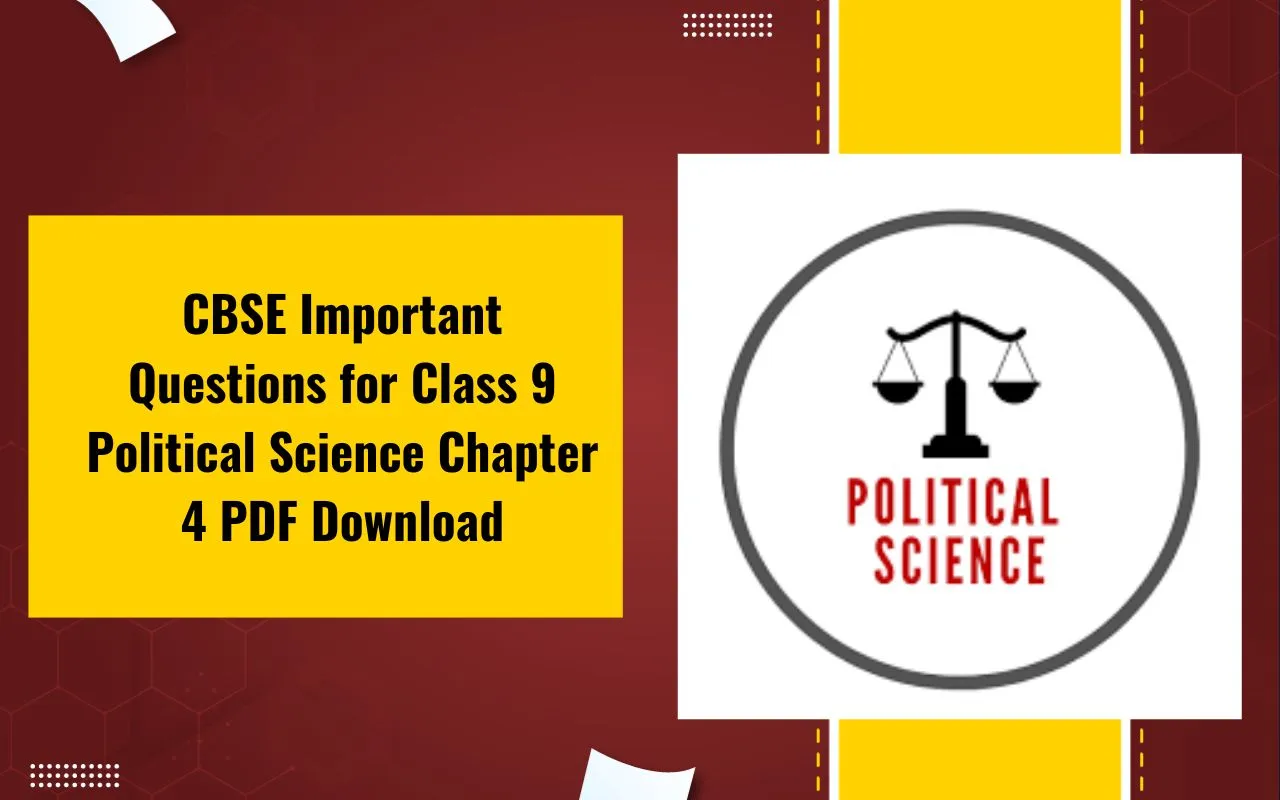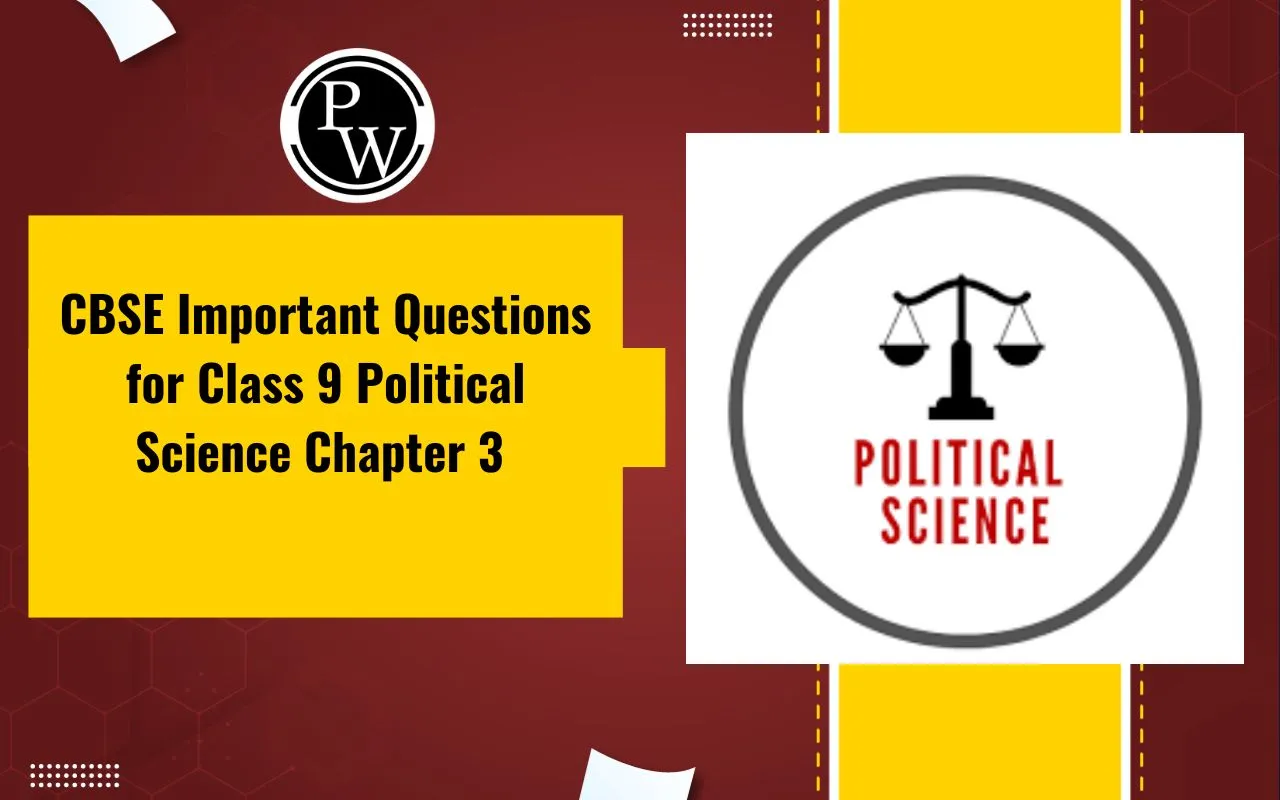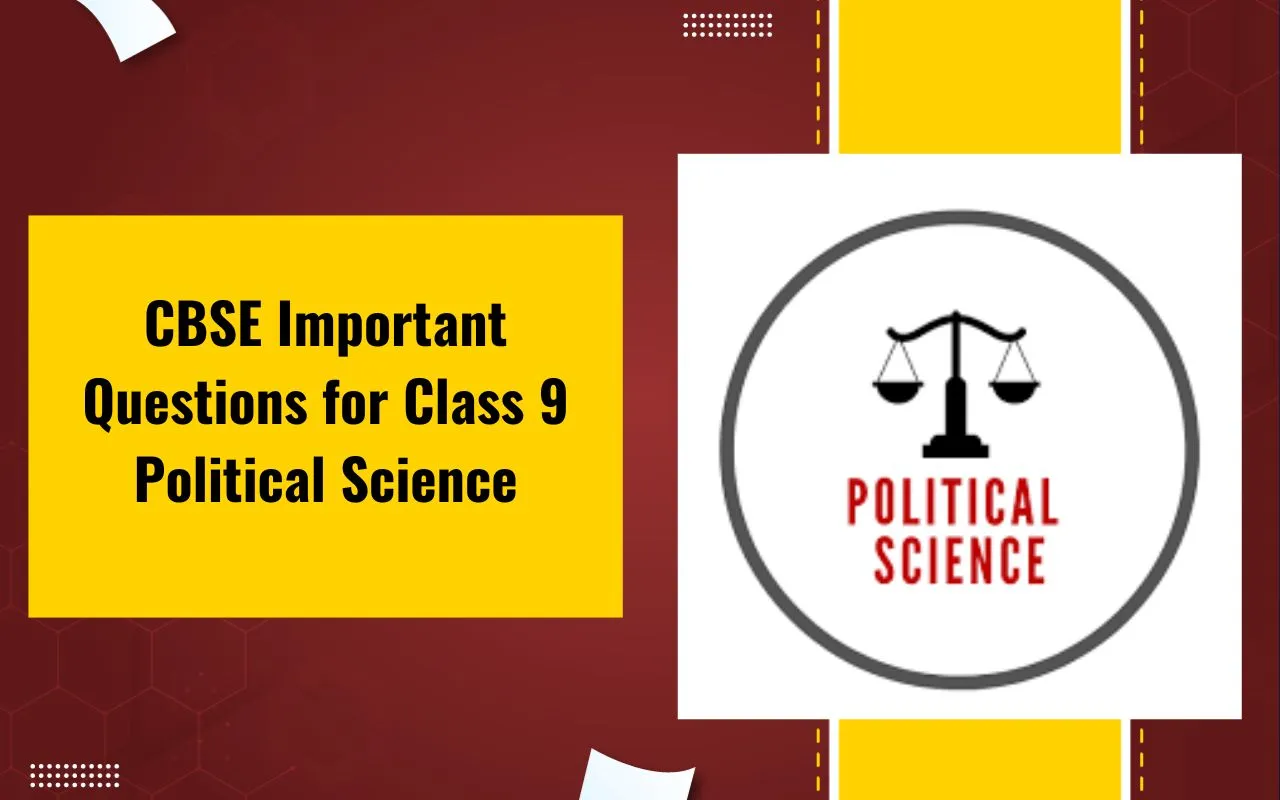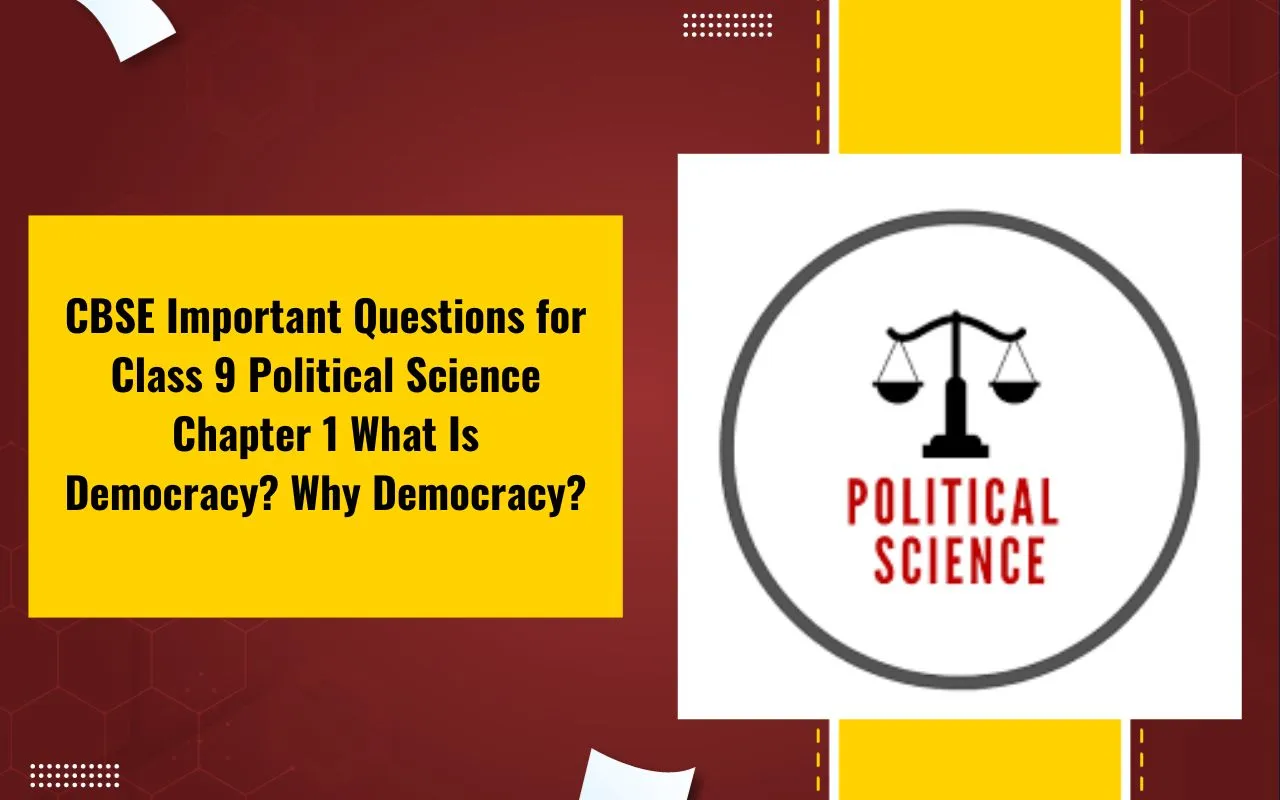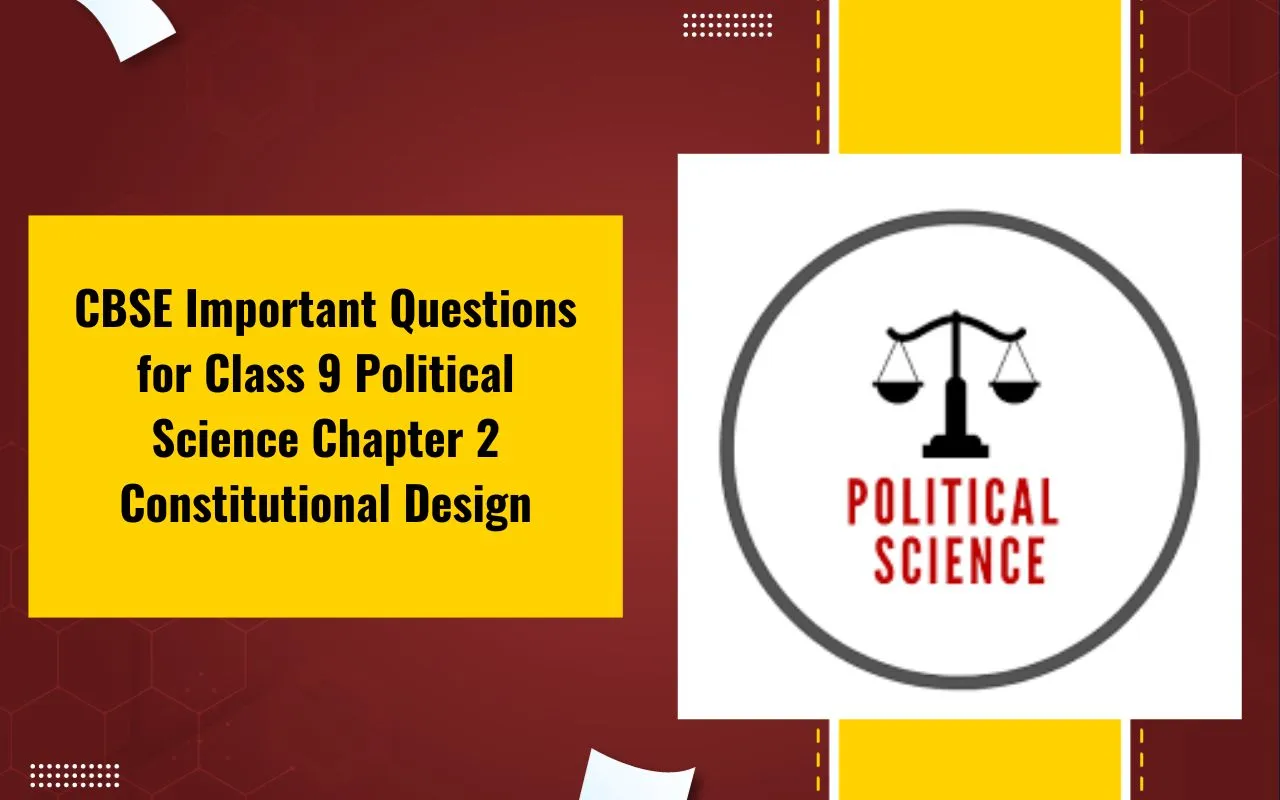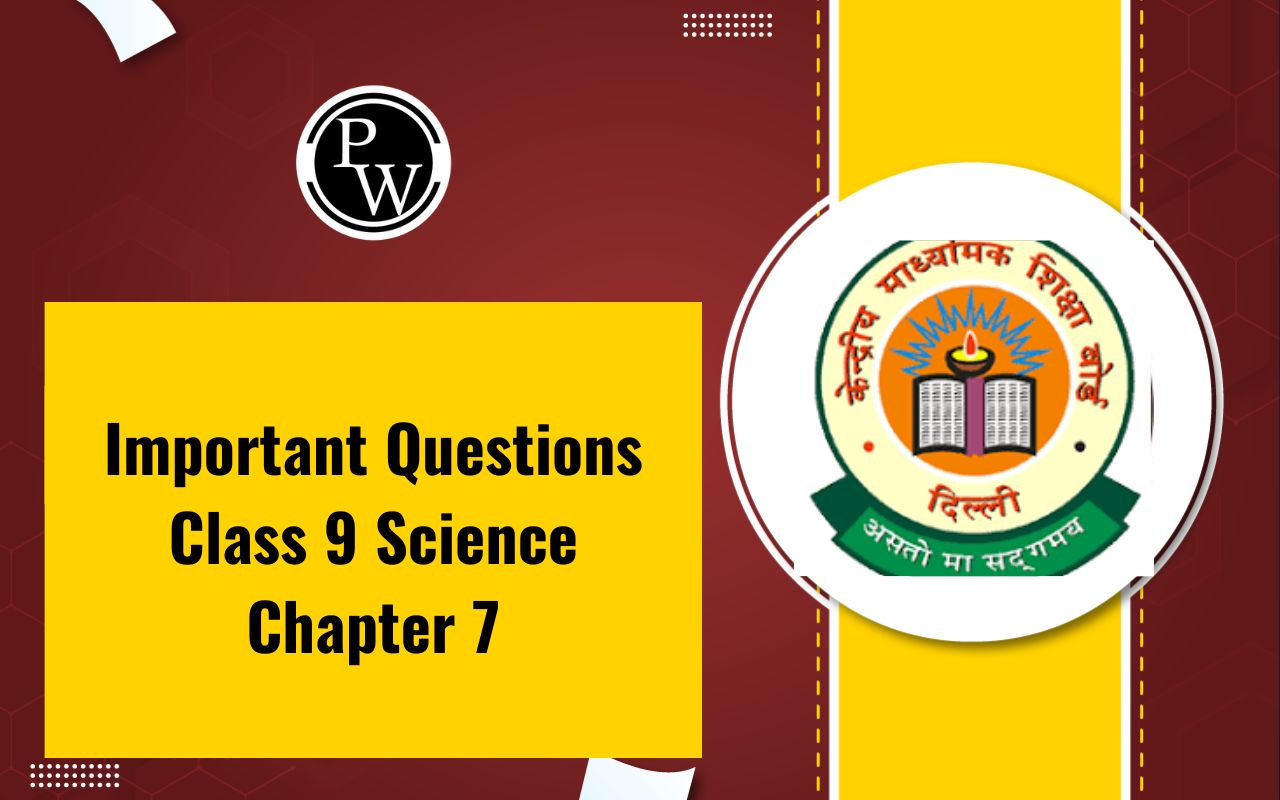

CBSE Class 9 History Notes Chapter 2: The rise of socialism in Europe is covered in History Chapter 2 Socialism in Europe and the Russian Revolution. Different social changes were brought about by the Russian Revolution, which also brought up issues of economic equality and the welfare of peasants and workers. The chapter also covers issues like the reforms brought forth by the new Soviet administration, the industrialization and mechanization of people's rights in agriculture, etc.
One of the best methods to get ready for the test is to go over CBSE Class 9 History Notes Chapter 2, which covers Socialism in Europe and the Russian Revolution. Subject matter specialists have simply written the CBSE Class 9 History Notes Chapter 2 so that students may easily grasp every topic and remember it for a longer amount of time.CBSE Class 9 History Notes Chapter 2 Overview
The Russian Revolution and European socialism both shed light on how European socialism developed. The revolution fundamentally altered society and brought up new issues about worker and peasant welfare as well as economic equality. Before the 18th century, society was split up into estates and orders, with the nobility and church in charge of regulating both social and economic authority. However, during the revolution, things began to shift, and people no longer desired to live under the authority of a higher caste. The idea of social change was altered by the colonies' development.CBSE Class 9 History Notes Chapter 2 PDF
Here we have provided CBSE Class 9 History Notes Chapter 2 for the ease of students so that they can just download the pdf and use it easily without the internet. These CBSE Class 9 History Notes Chapter 2 will help students understand the chapter better.CBSE Class 9 History Notes Chapter 2 PDF
CBSE Class 9 History Notes Chapter 2 Socialism in Europe and the Russian Revolution
Here we have provided CBSE Class 9 History Notes Chapter 2 for the ease of students so that they can prepare better for their exams.The Age of Social Change
Following the revolution, discussions about social authority and individual liberties spread throughout Europe and Asia. Though notions about societal change were changed by colonial expansion, not everyone supported a total revolution of society. Socialism emerged from the Russian Revolution as one of the twentieth century's most influential and potent social concepts.Liberals, Radicals and Conservatives
A country that accepted all religions was what liberals desired. They advocated for a representative, elected parliamentary government that was free from the influence of dynastic authority and was subject to laws that were interpreted by a skilled court that was separate from the ruling class. They desired a government that was chosen by the vast majority of the populace. After the eighteenth century, conservatives acknowledged change but also held that change should come gradually and that the past should be respected.Industrial Society and Social Change
New cities and industrialised regions emerged as a result of the Industrial Revolution, which also brought about changes in social and economic life. In pursuit of employment, men, women, and kids flocked to industries. Unfortunately, pay was low and working hours were lengthy. When there was little market demand for industrial items, unemployment occurred. Both radicals and liberals succeeded financially in business or trade. They contend that society can only advance if people's freedoms are respected, the impoverished are allowed to work, and the wealthy are allowed to act without limitation. Monarchs are overthrown by revolutionaries in France, Italy, Germany, and Russia. Revolutions to establish "nations" with equal rights were discussed by nationalists.The Coming of Socialism to Europe
By the middle of the nineteenth century, socialism was a widely accepted ideology in Europe. Socialists opposed private property and believed that it was the source of all contemporary societal problems. They ran campaigns to change it because they wanted to. In Indiana (USA), Robert Owen (1771–1858) aimed to establish a cooperative society known as New Harmony. Louis Blanc (1813–1882) favoured replacing capitalist businesses with cooperatives through government support. Friedrich Engels (1820–1895) and Karl Marx (1818–1883) contributed further concepts to this corpus of work. Marx maintained that the capitalists who owned the factories' investments were the "capitalists" in industrial society, while the labour force provided the profits for the capitalists. Private property rights and capitalism were overturned. Marx thought that the society of the future would naturally be communist.Support for Socialism
As socialist ideologies proliferated throughout Europe by the 1870s, they gave rise to an international organisation known as the Second International. Workers in Germany and England established associations to advocate for improved living and working circumstances. By 1905, socialists and trade unionists had founded the Labour Party and the Socialist Party.The Russian Revolution
Socialists seized control of the Russian government during the October Revolution of 1917. The Russian Revolution was the name given to the events of October 1917 and the fall of the monarchy in February 1917.The Russian Empire in 1914
Tsar Nicholas II commanded Russia and its empire in 1914. The Russian Empire stretched to the Pacific and included modern-day Central Asian states, as well as Georgia, Armenia, and Azerbaijan. It also included present-day Finland, Latvia, Lithuania, Estonia, and portions of Poland, Ukraine, and Belarus. Russian Orthodox Christianity made up the majority of the population.Economy and Society
Russians who farmed for both their consumption and the market made up the majority of the population at the start of the 20th century. Moscow and St. Petersburg were important industrial hubs. The majority of the output was done by craftsmen, however there were also big factories and craft enterprises. More factories were established and foreign investment in the industrial sector rose in the 1890s. The government oversaw large factories to guarantee minimum wages and set work hours. The workforce was a socially divided group. Their skill levels also caused them to diverge. When employees disagreed with employers about layoffs or working conditions, they banded together despite their differences to cease work. The majority of the land was farmed by peasants, while considerable domains were owned by the Orthodox Church, the monarch, and the nobility. Because of their contributions to the Tsar, nobility gained status and authority. Peasants in Russia want the aristocrats' land.A Turbulent Time: The 1905 Revolution
Russia was an autocracy, with the Tsar being above Parliament even at the start of the twentieth century. Russia, the Social Democrats, and the Socialist Revolutionaries collaborated with labourers and peasants to seek a constitution during the Revolution of 1905. The year 1904 marked the beginning of hard times for Russian labourers, as the cost of necessities increased, and their actual pay fell by 20%. Employees went on strike to seek better working conditions, higher pay, and a decrease in the workday to eight hours. When the procession arrived at the Winter Palace, it was ambushed by both the police and the Cossacks. The Bloody Sunday incident set off a chain of events that eventually led to the 1905 Revolution. The Tsar permitted the establishment of an elected consultative Parliament, or Duma, during the 1905 Revolution. The majority of committees and unions operated informally after 1905 since they were deemed to be unlawful.The February Revolution in Petrograd
The people of Petrograd City are split. Workers' lodgings and factories were situated on the right side of the River Neva, while official buildings and elegant neighbourhoods like the Winter Palace were situated on the left. The workers' quarters were severely impacted by food shortages. On February 22, a factory was closed on the right bank. The reason International Women's Day exists is because women pioneered strikes as well. With workers encircling the official buildings and trendy quarters, the government declared a curfew. Duma was placed on leave on February 25. Protesters brandishing signs calling for bread, wages, improved working hours, and democracy crowded the streets. Although the cavalry was summoned by the government, they declined to open fire on the protesters. The Petrograd Soviet was the name given to the assembly of striking workers and soldiers that formed a "council" or "Soviet" in the same building as the Duma. To govern the nation, leaders of the Soviet Union and the Duma organised the Provisional Government. A constitutive assembly chosen by universal adult suffrage would decide Russia's future. The February Revolution, led by Petrograd, ended the monarchy in February 1917.The Revolution of October 1917
The Bolsheviks and the Provisional Government were increasingly at odds. Lenin convinced the Bolshevik Party and the Petrograd Soviet to consent to a socialist takeover of power on October 16, 1917. The Soviet Union created a Military Revolutionary Committee led by Leon Trotsky to plan the seizure. Ministers were to be arrested and government offices were to be seized by the supporters of the Military Revolutionary Committee. The ministers had given up before dusk and the committee had taken control of the city. The Bolshevik move was accepted by the majority of the All-Russian Congress of Soviets at a meeting in Petrograd.Stalinism and Collectivisation
The collectivization of agriculture proved to be disastrous during the early stages of the planned economy. Soviet Russia's towns were severely struggling with a shortage of grain by 1927–1928. Stalin imposed strict emergency protocols. Party members patrolled the grain-producing regions in 1928, overseeing the collecting of forced grains and conducting raids on wealthy peasants known as "kulaks." The land was turned over to peasants after 1917. All peasants were compelled by the Party to work in collective farms (kolkhoz) starting in 1929. The kolkhoz profit was divided among the peasants who laboured on the land. There was a one-third decrease in livestock between 1929 and 1931. Stalin's regime tolerated some independent farming but showed indifference towards those who engaged in it. Despite collectivization, productivity did not rise right away, and the 1930–1933 disastrous harvests claimed almost 4 million lives. Accusations were made across the nation, and by 1939, nearly 2 million people were incarcerated or housed in work camps.The Global Influence of the Russian Revolution and the USSR
Communist parties, such as the Communist Party of Great Britain, were founded in numerous nations. International participants in the Conference of the Peoples of the East (1920) included non-Russians from outside the USSR. The Comintern, a global alliance of socialist parties that supported Bolshevik ideology, was established by him. The USSR gave socialism a global face and grandeur before the start of World War II. The USSR grew into a major power, its industries and agriculture flourished, and food was being provided for the underprivileged. The Soviet Union's standing as a socialist nation had deteriorated by the end of the 20th century.Benefits of CBSE Class 9 History Notes Chapter 2
Studying CBSE Class 9 History Notes on Chapter 2 Socialism in Europe and the Russian Revolution offers several benefits, including:Comprehensive Coverage : The notes provide a structured overview of the entire chapter, summarizing key concepts, events, and historical figures related to socialism in Europe and the Russian Revolution.
Clarity and Simplification : They simplify complex ideas and historical events, making it easier for students to grasp and remember essential information.
Exam Preparation : CBSE notes often focus on topics that are crucial for exams. These notes can help students identify important questions, themes, and concepts that are likely to appear in exams.
Time-Saving : Notes condense large amounts of information into concise summaries, saving students time during revision periods.
Conceptual Understanding : They aid in building a strong foundation of historical knowledge and understanding, which is crucial for higher classes and competitive exams.
Visual Aids : Many notes include diagrams, timelines, and maps that help students visualize historical events and understand their chronological sequence.
Self-Assessment : Notes often include practice questions and exercises that allow students to test their understanding and identify areas where they need more practice.
Supplementary Resources : They often refer to additional resources like recommended readings or websites for further exploration of the topic.
Language and Writing Skills : Reading and using notes can improve students' ability to summarize information effectively and enhance their writing skills in exams.
Contextual Understanding : They provide context to historical events, explaining how they influenced social, political, and economic developments in Europe and Russia.
.CBSE Class 9 History Notes Chapter 2 FAQs
What is the main point of Chapter 2 of Class 9 history?
What is Russian Revolution class 9 short notes?
What are the chapters in class 9 history notes?

